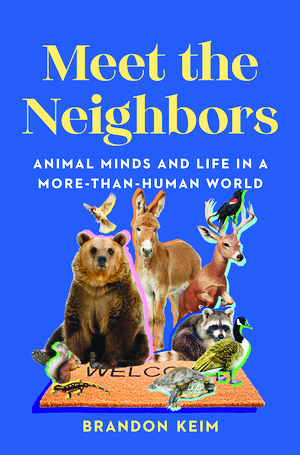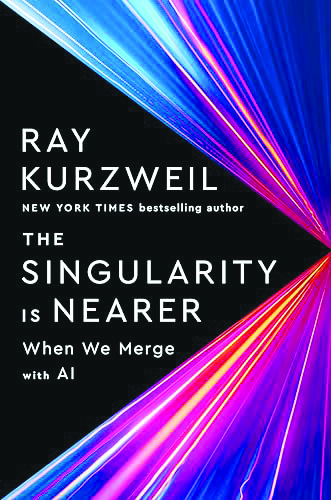By Any Other Name, by Jodi Picoult (Ballantine Books, 544 pages)
Jodi Picoult does not shy away from heavy-hitting topics. In the same way that she tackles things like abortion in A Spark of Light, teen suicide in The Pact, school shootings in 19 Minutes, and Covid in Wish You Were Here, Picoult dives into the silencing of women today and throughout history in her latest, By Any Other Name.
Many of Picoult’s recent books have frustrated me with their strong political views and cultural commentary, not because I disagree with her, necessarily, but because I don’t want any author’s viewpoints shoved down my throat — put the topic out there and let me think about it. Also, I want my fiction to be a little more fictitious and a little less like I’m reading an op-ed in today’s newspaper.
By Any Other Name explores the history of repressed women in a way that mostly allows the story to do the talking. The book has two storylines: One harkens back to the 16th and 17th centuries and follows the semi-fictional life of a real woman, Emilia Bassano. Based on significant research, Picoult depicts her as a closet writer who is forced to be a lord’s courtesan for many years, then an abused wife for many more — all while writing poems and plays that an actor named William Shakespeare publishes for her under his name.
The second storyline takes place in modern day and follows Melina Green, a playwright who struggles to get her works produced, presumably because she is a woman. This is somewhat proven when one of her plays — about her ancestor, Emilia — finally gets published after its authorship is mistakenly attributed to her best friend, Andre. The irony here is that Andre is gay and Black and far from the cis white male stereotype that Picoult suggests dominates even the modern playwriting field.
Interestingly, given the subject, I felt that Melina and Emilia’s storylines could have been written by two different authors — Melina’s clearly by Picoult, where the moral of the story may as well be bolded, underlined and highlighted. (One of many examples is when Melina is talking to theater critic Jasper Tolle about why plays about “complicated, wholly realized women” don’t make it to the stage. When he says that she’s “painting with a very broad brush when it comes to what gets produced and what doesn’t,” she responds, “That is exactly the kind of thing a straight white man would say,” then waits for him to tell her she’s wrong — “which,” Picoult writes, “of course, would be proof of everything she was alleging.” Tell me, Ms. Picoult, how you really feel…).
Emilia’s story, on the other hand, seemingly could have been written by, well, any other name. Maybe this is a testament to Picoult’s ability to immerse herself in a different time period and develop a narrative based on thorough research, losing her own voice in Emilia’s in a way that she doesn’t with Melina, whose story is entirely fictional. With Emilia, it seems, all Picoult has to do is tell it like it is to get the point across (regarding Emilia’s forced relationship with Lord Chamberlain, she writes that Emilia “had been sold by her family, for her family” — no opinion there, just a fact that speaks volumes).
The difference in storytelling is somehow both fascinating and off-putting.
What I like about Emilia’s story: Emilia herself is a well-developed character whose strengths are best defined in her resilience and her intelligence; she uses both to get her writing in front of an audience, willing to forgo acknowledgment of her work in order to show her words to the world — and to make some much-needed money, as Shakespeare gave her a small portion of “his” earnings.
I also like Emilia’s secret friendship with Christopher “Kit” Marlowe, a well-known Elizabethan poet and playwright who was purportedly gay, a heavy drinker and a spy. Kit is rough around the edges but becomes a great friend to Emilia, adding an unexpected emotional arc and some comic relief. Meanwhile, Emilia’s secret relationship with Southampton is lovely and passionate and shows a spark of brightness that typically lies dormant inside her.
Emilia’s arranged relationship with Lord Chamberlain is not nearly as bad as it could be (as we see later, when she is beaten severely and often by the man she is forced to marry). She isn’t his mistress by choice, but Lord Chamberlain is a kind man, never controlling or cruel, and she benefits from both his wealth and the autonomy he grants her. She is, for those years, “a nightingale in the loveliest of cages.”
Melina’s story, by comparison, is more straightforward, specifically addressing her challenges as a female playwright. Her friendship with Andre is fun and quippy (at least at first), and her interactions with Jasper are intriguing. Her chapters are a breath of fresh, modern air, if you can get past the heavy-handed feminist commentary.
There’s a lot to like in By Any Other Name, but there’s also a lot going on — a lot of characters and a lot of scenes (if this were a play the stage crew would be marathon-level exhausted by the final act).
There were parts that dragged a bit and sometimes seemed redundant, especially in Emilia’s chapters. If I had been able to appreciate more of the Shakespearean references that Picoult weaves into those chapters — as notated at the end of the book — it probably would have enhanced my reading experience. But I’m a former English major who actually studied some Shakespeare (albeit more than two decades ago), so I have to question how much this will appeal to the masses.
By Any Other Name takes the often questioned legitimacy of Shakespeare’s authorship and makes a compelling case while weaving in a modern story that Picoult uses to show how far we’ve come as a society but also how far we have to go. It’s a long but worthwhile journey if you like strong female characters or you’re captivated by the idea that Romeo and Juliet may have been penned by a woman. B+ —Meghan Siegler






